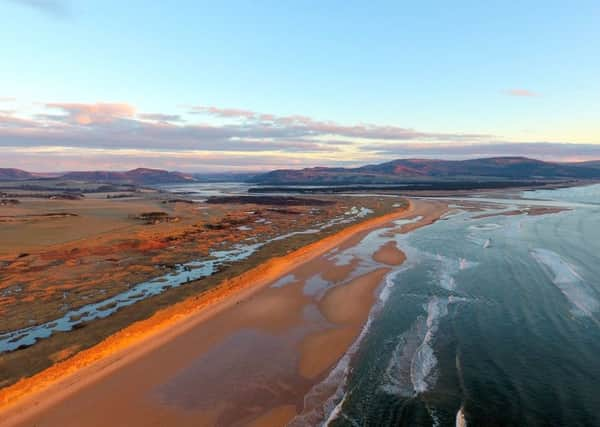Aedán Smith: Now's the time for the Scottish Government to prove its environmental credentials


The application currently before the Scottish Government is to build a golf course at Coul Links in East Sutherland, and in so doing to destroy and fundamentally change a spectacular mosaic of sand dunes and seasonally flooded dune slacks on the edge of Loch Fleet.
Parallels with Donald Trump’s massively under-delivering Aberdeenshire project are unavoidable and the Coul Links case has again highlighted the challenges Scottish Ministers face of striving to boost Scotland’s economy while trying to show that they are also responsible custodians of Scotland’s world famous natural heritage.
Advertisement
Hide AdAdvertisement
Hide AdDonald Trump’s recent brief visit to Scotland has given us a timely reminder that the Scottish Ministers’ approval in 2008 for his Aberdeenshire project remains a desperate low point in Scotland’s recent environmental history.


Over the last few years the Scottish Government have being working hard, and with some genuine and laudable successes, to build a vision of Scotland as a progressive, environmentally sustainable country and as something of an international environmental leader.
There have been numerous speeches and announcements. In November 2017, First Minister Nicola Sturgeon stated, simply and clearly, to an international audience of 700 delegates at the World Forum on Natural Capital in Edinburgh: “In Scotland, we believe we are making progress in creating a better environment and a better society.”
And, whilst many who care about the environment worry about the implications of Brexit, given that many of our current environmental laws stem from the EU, Scottish Ministers have given welcome reassurances that they will maintain standards. In response to a recent question in the Scottish Parliament in June 2018 from Green MSP John Finnie on whether the First Minister will respect all international environmental treaty obligations, including the Ramsar convention, The First Minister replied succinctly: “Yes. It is our intention to honour obligations that currently arise from EU membership... we have been clear in our resolve not to see environmental protections or other protections downgraded as a result of Brexit.”
Significantly, the golf course currently proposed for Coul Links would destroy part of Ramsar site which is protected by the international Ramsar Convention. In fact, such is the importance of Coul Links, it is also protected as a European Special Protection Area and as a Site of Special Scientific Interest.
Trump’s visit to Scotland also coincided with revelations that monitoring of his new Aberdeenshire course by Scottish Natural Heritage, Scotland’s statutory nature advisor, had found many of the special features of the wildlife site on which his golf course was built had been destroyed, with no prospect of recovery. It may well be de-notified of its SSSI status as a consequence, meaning its special value has been destroyed. Meanwhile, the majority of the economic benefits used to justify its development have yet to materialise.
Development can and does often go hand-in hand with protecting and enhancing nature, but some places, such as the shifting sand dunes that used to drift across what is now Trump’s Aberdeenshire resort and the network of dune habitats that make Coul Links such a special place for wildlife and people, are simply incompatible with large-scale development.
The fate of Coul Links now rests in the hands of the Scottish Ministers and, while Ministers’ statements on environmental protection have been very positive, their decision on this planning application will provide a litmus test as to whether their actions on environmental protection live up to their words.
Advertisement
Hide AdAdvertisement
Hide AdThey could not have hoped for a better opportunity to show the world how far we’ve come in Scotland since Donald Trump was given permission to wreck a wildlife site back in 2008.
Aedán Smith, head of planning and development, RSPB Scotland